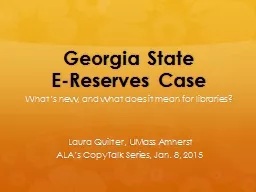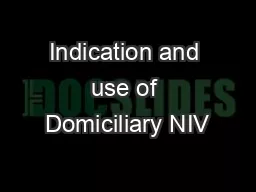PPT-Presented by: Laura Blanton
Author : aaron | Published Date : 2018-09-20
Practical Animal Welfare Solutions Flowery Branch Georgia 7705973399 LauraMBlantongmailcom Beyond the Basics Emergency Evacuation Planning amp Exercise for the Multiple
Presentation Embed Code
Download Presentation
Download Presentation The PPT/PDF document "Presented by: Laura Blanton" is the property of its rightful owner. Permission is granted to download and print the materials on this website for personal, non-commercial use only, and to display it on your personal computer provided you do not modify the materials and that you retain all copyright notices contained in the materials. By downloading content from our website, you accept the terms of this agreement.
Presented by: Laura Blanton: Transcript
Download Rules Of Document
"Presented by: Laura Blanton"The content belongs to its owner. You may download and print it for personal use, without modification, and keep all copyright notices. By downloading, you agree to these terms.
Related Documents














